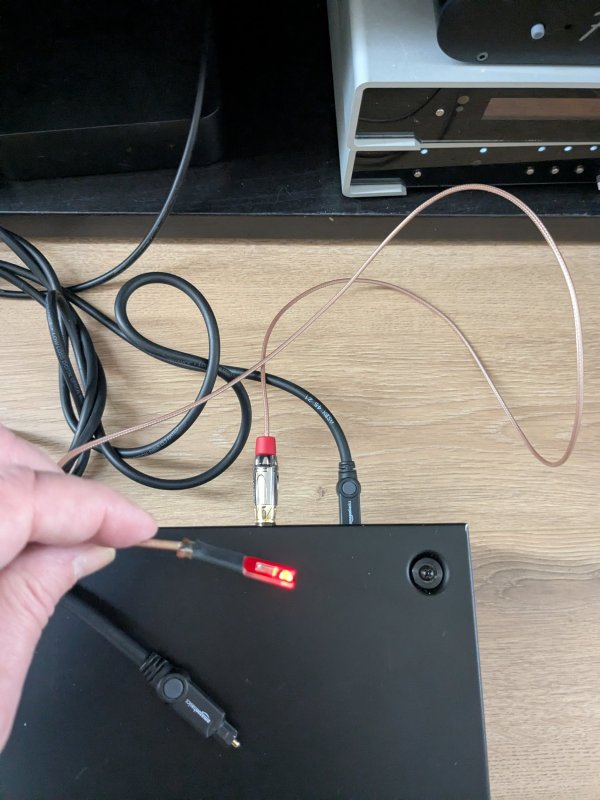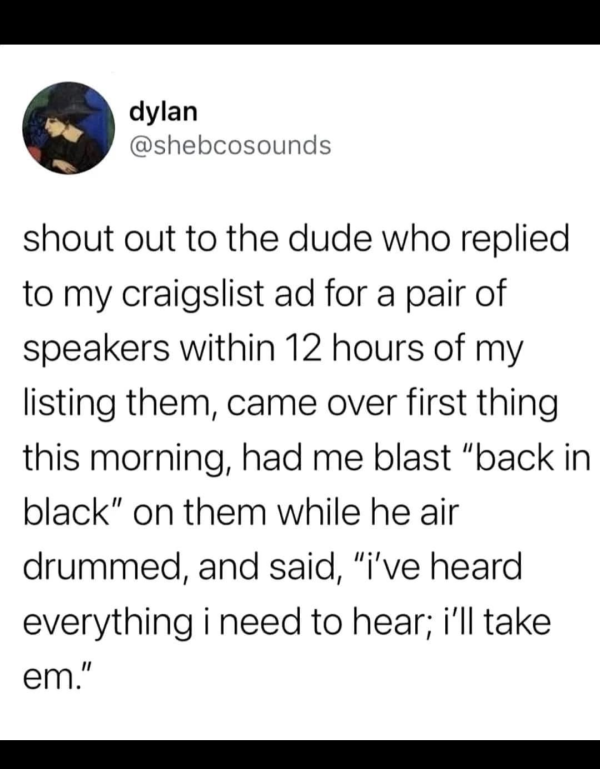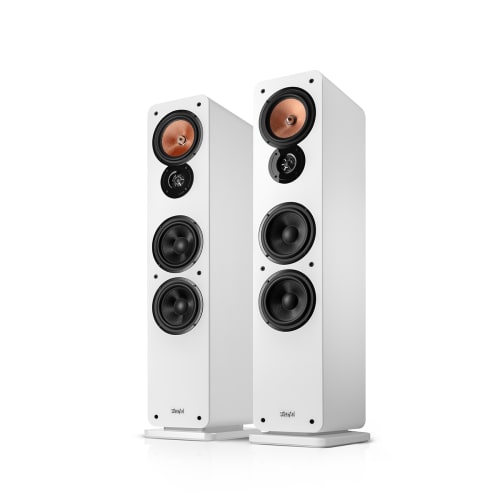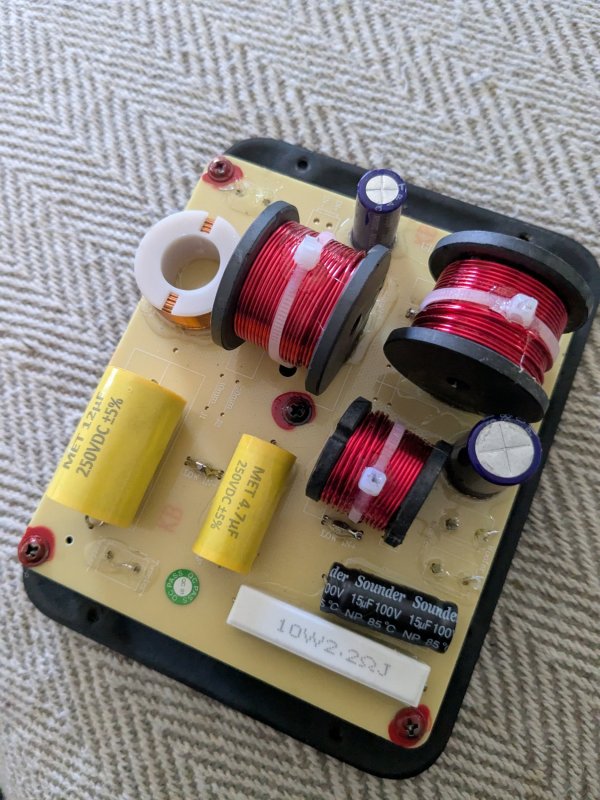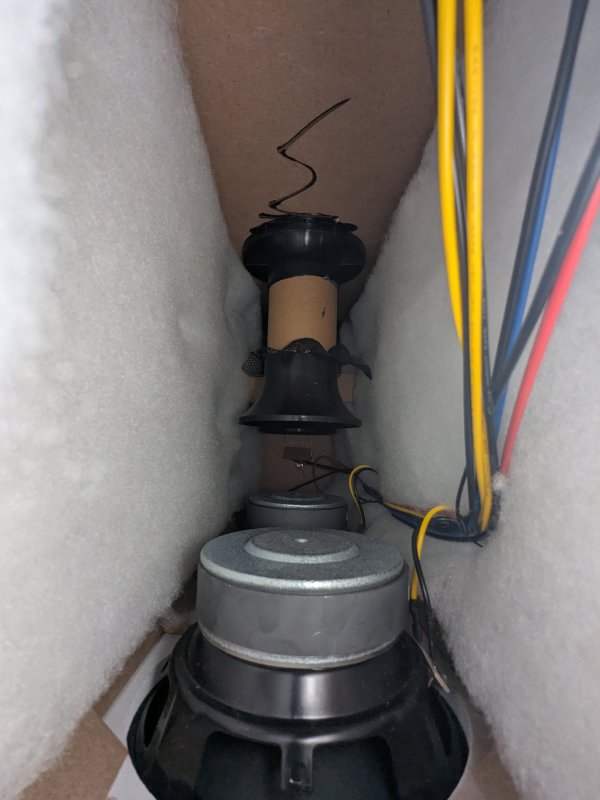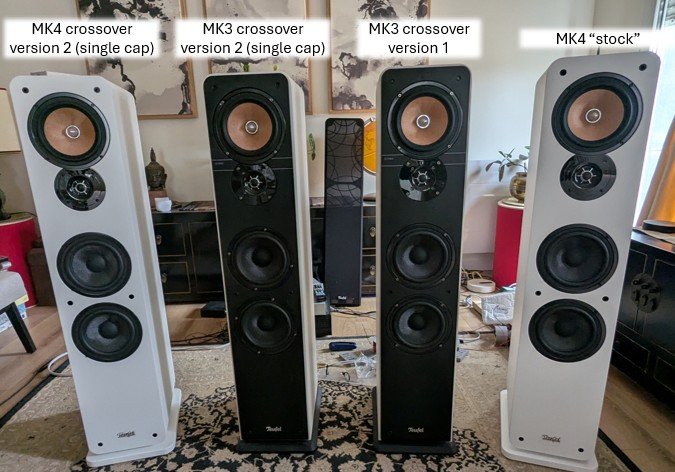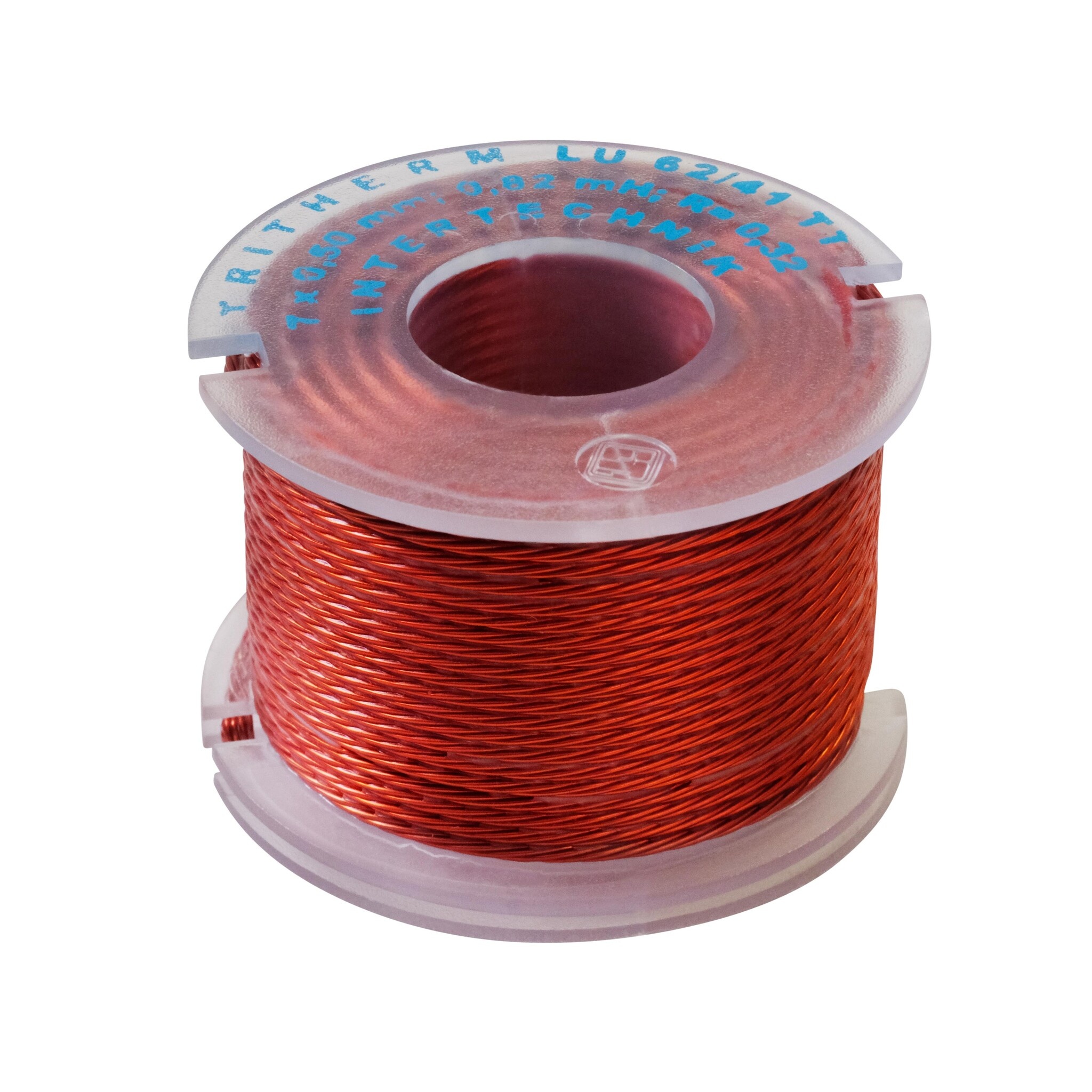The monologue continues

I enjoy sharing, irrespective of feedback!
So John Brown, of ECDesigns, had originally purchased these cheap Teufel speakers just to see how loud they played on his powerDAC-SX. Then he and his brother Gordon tweaked the crossover and were surprised by the results, at which point I decided to try them. I tweaked the crossover a little further. John Brown wrote back a few days ago that he had taken it another step further, by running the 4 speakers (2 wooders, a midrange driver, and a tweeter) in parallel, with only a 6.8 uF capacitor in series for the tweeter. He also recommended using a good quality capacitor.
This is what he told me (I am sure he will not mind being quoted) - I was interested and curious to try:
We also performed further experiments with the Teufel crossover filter. As I expected, every part in the crossover for whatever function will degrade the sound quality. This could be best described as reduced clarity / control and reduced sensitivity / output.
One choke between bass driver and amplifier / PowerDAC output already reduces control over the driver that is connected after the choke. The choke always introduces losses and even the winding geometry (plain coil, with or without core material, Rodin / Star coil configuration) can make a difference.
So I connected separate wires to all drivers in my Teufel speaker and routed these outside through the small holes in the protective plastic bass reflex port mesh.
Tried the usual crossover setups with my open baffle as reference. I was not able to get the open baffle clarity and speed no matter what conventional crossover filter I tried.
Then I decided to measure the Teufel bass and midrange driver inductance (indication of the driver resistance at various frequencies). It was roughly 800uH (0.8mH). Based on this I simply decided to put both bass drivers plus midrange driver in parallel and in phase. I expected the drivers to decouple automatically at a frequency set by the driver inductance and thus leaving most energy for the tweeter. This works surprisingly well and now the clarity and sensitivity improved significantly.
The tweeter impedance remains rather low across bass and midrange as it has low inductance. Its X-max (maximum cone / dome movement) is also restricted so we must attenuate lower frequencies. This means using a series capacitor, after some calculations and testing I ended up with 6.8uF film cap.
The quality (Q factor) of this capacitor is critical, best so far is a Mundorf Supreme capacitor (black capacitor with gold print). It gives best trebles clarity. Cheaper caps reduce clarity and speed, so the quality of this single filter component is rather important.
This simple setup (all parallel and in phase with just one series capacitor on the plus terminal of the tweeter) works best so far and comes close to open baffle clarity. The response may not be perfectly flat but the clarity suggests the phase accuracy is high and that seems to be more important than a ruler flat response.
I was skeptical - this is unconventional - but tried it, having two capacitors of the same value. The small loss in linearity of the frequency response is compensated for by the increased phase coherence of the drivers, and higher sensitivity.
As a result of my first tests, I ordered the better capacitors and received them today. This is the model:

It is a clear improvement as well on the cheaper model I was using.
In summary, the speakers now feel like a single source point, and it is obvious and striking to hear, especially on vocals (reminds me of my Altec 755). There is better clarity, speed, and resolution. This offers a significant jump in sound quality, but there are some further tweaks to be made. To be continued...




